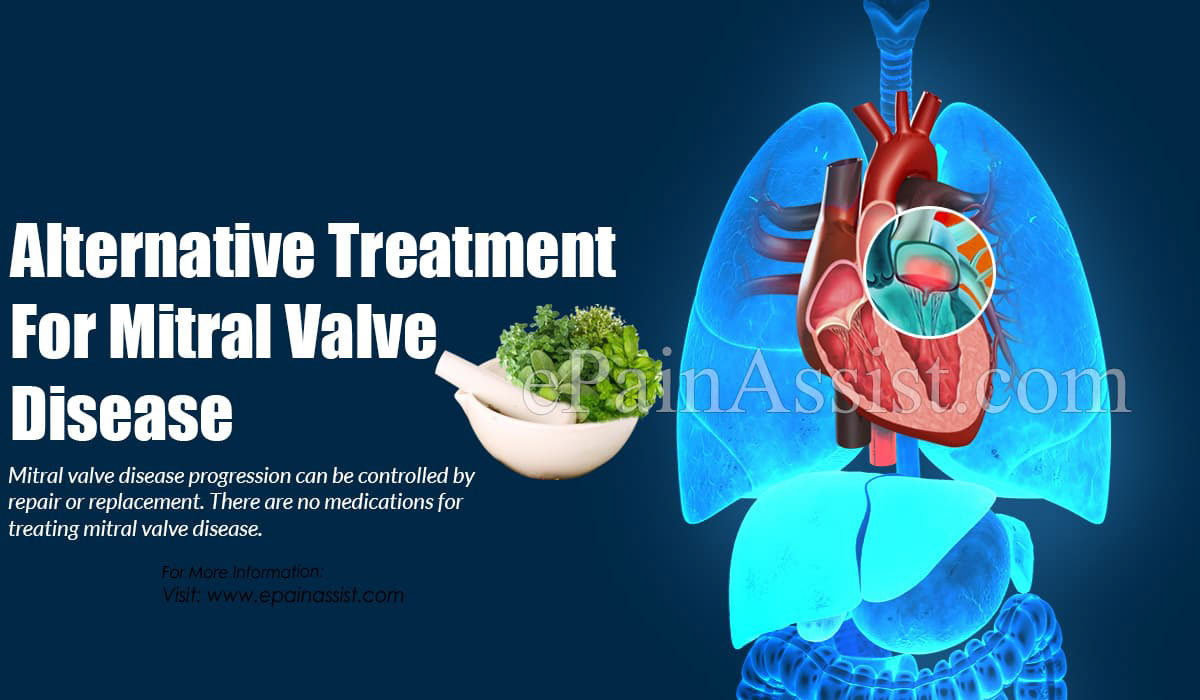Alternative Treatment For Mitral Valve Disease
Mitral valve disease progression can be controlled by repair or replacement. There are no medications for treating mitral valve disease. There are alternative treatment measures for mitral valve disease which can help in modifying the disease progression and controlling the symptoms. There are a number of alternative treatments available in the market for the treatment of mitral valve.[1]
Magnesium. It can change the shape and condition of the mitral valve disease. There are several studies which indicate patients with mitral valve prolapse (MVP) are deficient in magnesium.[2] It helps reduce blood pressure and improves overall heart function and heart disease.
Garlic. Garlic is good for mitral valve disease and is a good alternative treatment. There are several studies which support its use in treating high blood pressure, strokes, coronary heart problems, and high cholesterol. It improves blood circulation and has antiplatelet and antithrombotic effects. The main ingredient is allicin which improves the flow of blood.[3] Garlic increases the risk of bleeding.
Hawthorn. It is one of the most commonly used alternative treatments for heart valve problems such as mitral valve disease.[4] It acts by increasing the flow of blood towards the heart and improving contraction of cardiac muscles. It increases the pumping action of the heart and in reducing the workload on the heart.

Omega-3 Fatty Acids. It is most commonly found in fish and is found to be effective in lowering blood pressure, cholesterol and reducing the risk of mitral valve disease.
Green Tea. The main antioxidant ingredient is epigallocatechin gallate (EGCG) which protects the heart. It can be consumed as a tea or a capsule.
Pomegranate. The juice is rich in powerful antioxidants which are useful in atherosclerosis and decreasing high blood pressure and mitral valve disease.
Potassium. The dietary intake of potassium helps in improving overall heart health and is a good replacement for table salt, hence reducing the risk of high blood pressure.[5]
Red Yeast Rice. It is traditionally been used for treating cholesterol. This mixture of fermented rice with yeast acts like statin and reduces statin-related muscle pain.
Flaxseed. It is rich in omega 3 fatty acid and often included in the diet to decrease blood pressure and inflammation. Flaxseed is rich in lignans which have shown to reduce cholesterol and plaque in the arteries.[6] It is better to include flaxseed in the diet and not the oil. Seeds should be grounded and preferably used fresh.
Vitamin K2. It is a useful vitamin which prevents deposition of the calcium in arteries and blood vessels. It reduces the risk of heart disease in patients consuming Vitamin K. Calcium should be present only in the bone, the excess calcium in the arteries and blood vessels causes’ age-related stiffness. It is also useful in preventing mitral valve disease.
Resveratrol. It is an ingredient present in chocolate and red wine. Resveratrol is a polyphenol which is found to be effective in preventing cardiovascular problems such as mitral valve disease.[7]
Coenzyme Q10. It is produced by the human body and is responsible for functioning of the cells and also to extract energy from food. Heart muscles require energy for constant working hence there should be a continuous supply of CoQ10. With age, the level of CoQ10 depletes decreasing the availability of energy to the heart muscles.[8] CoQ10 is found to be effective to help reduce the symptoms of mitral valve disease and high blood pressure. Studies also suggests that CoQ10 is useful in mitral valve prolapsed in children. It is a powerful antioxidant which reduces stress and increases antioxidant enzyme activity. Antilipidemic drugs such as statins reduce the availability of CoQ10; hence doctors prescribe CoQ10 in such patients.
CoQ10 alters the lining of the blood vessels and is useful in modifying cardiovascular diseases. It is often used in combination with other antioxidants reducing the risk of heart-related deaths.
Pycnogenol. It is the patented water extract of the bark Pinus pinaster ssp. Atlantica. It is composed of proanthocyanidins (OPCs), as well as several other bioflavonoids. catechin, epicatechin, phenolic acids. Pycnogenol is useful in mitral valve prolapse (MVP). Procyanidins are potent antioxidants and are also present in wine, grapes, cocoa, cranberries, and apples.
Conclusion
A number of alternative treatments are available to control cardiovascular disease, in general, decreasing the workload on the heart. These herbal and food supplements help in decreasing the symptoms of mitral valve disease.
- https://www.mayoclinic.org/diseases-conditions/mitral-valve-regurgitation/diagnosis-treatment/drc-20350183
- https://sciendo.com/article/10.2478/sjecr-2019-0026
- https://www.healthline.com/nutrition/11-proven-health-benefits-of-garlic
- https://www.ncbi.nlm.nih.gov/pmc/articles/PMC3249900/
- https://www.cdc.gov/salt/potassium.htm
- https://www.ncbi.nlm.nih.gov/pmc/articles/PMC2989356/
- https://www.mayoclinic.org/diseases-conditions/heart-disease/in-depth/red-wine/art-20048281
- https://www.ncbi.nlm.nih.gov/pmc/articles/PMC6627360/
Also Read:
- Mitral Valve Prolapse or Floppy Mitral Valve Syndrome
- How Dangerous Is Mitral Valve Replacement Surgery?
- How Many Years Does A Mitral Valve Repair Last?
- What Causes You To Have Mitral Valve Disease?
- What Is The Best Treatment For Mitral Valve Disease?
- Coping Methods For Mitral Valve Disease
- Can Mitral Valve Prolapse Be Cured?
